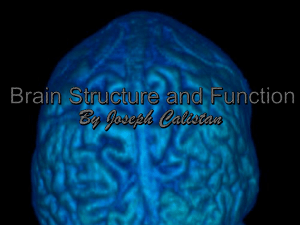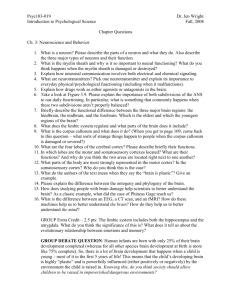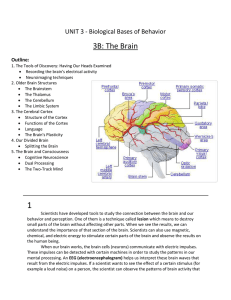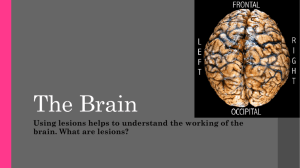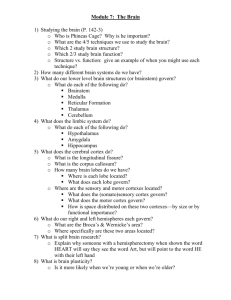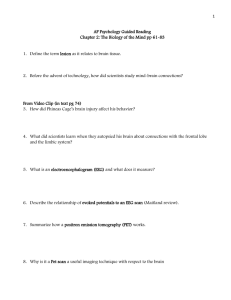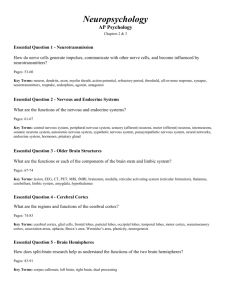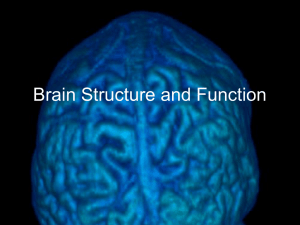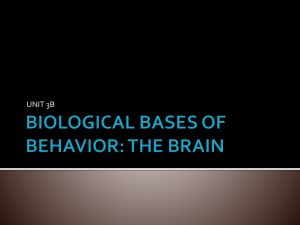A.P. Psychology 3-B - 3
advertisement
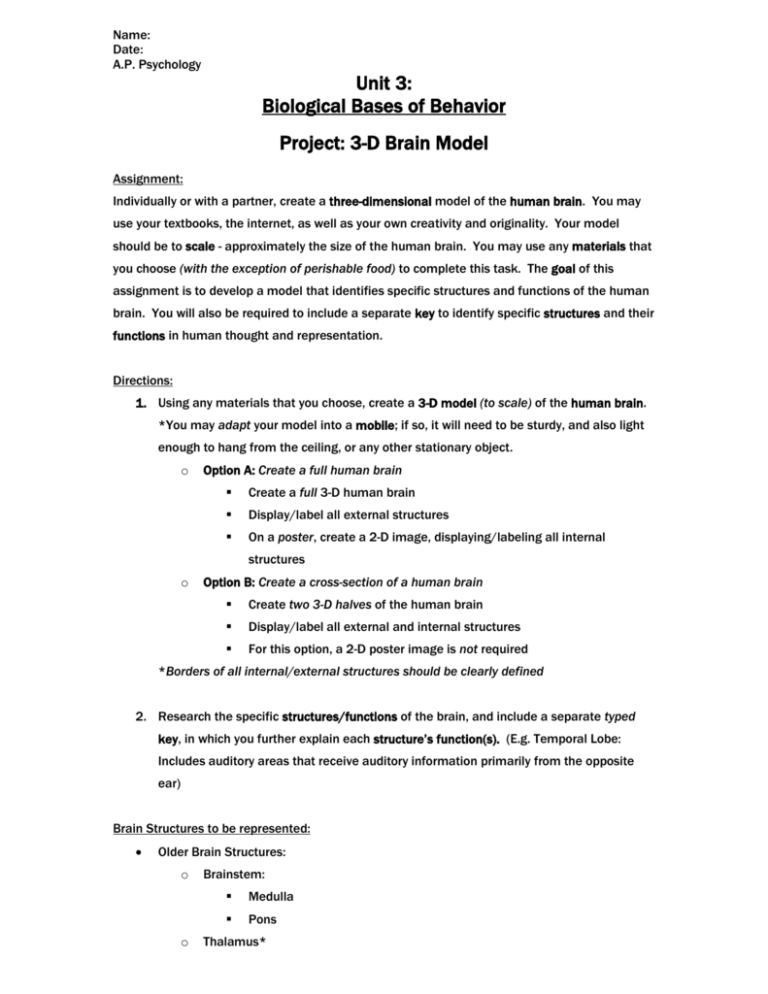
Name: Date: A.P. Psychology Unit 3: Biological Bases of Behavior Project: 3-D Brain Model Assignment: Individually or with a partner, create a three-dimensional model of the human brain. You may use your textbooks, the internet, as well as your own creativity and originality. Your model should be to scale - approximately the size of the human brain. You may use any materials that you choose (with the exception of perishable food) to complete this task. The goal of this assignment is to develop a model that identifies specific structures and functions of the human brain. You will also be required to include a separate key to identify specific structures and their functions in human thought and representation. Directions: 1. Using any materials that you choose, create a 3-D model (to scale) of the human brain. *You may adapt your model into a mobile; if so, it will need to be sturdy, and also light enough to hang from the ceiling, or any other stationary object. o Option A: Create a full human brain Create a full 3-D human brain Display/label all external structures On a poster, create a 2-D image, displaying/labeling all internal structures o Option B: Create a cross-section of a human brain Create two 3-D halves of the human brain Display/label all external and internal structures For this option, a 2-D poster image is not required *Borders of all internal/external structures should be clearly defined 2. Research the specific structures/functions of the brain, and include a separate typed key, in which you further explain each structure’s function(s). (E.g. Temporal Lobe: Includes auditory areas that receive auditory information primarily from the opposite ear) Brain Structures to be represented: Older Brain Structures: o o Brainstem: Medulla Pons Thalamus* o Reticular Formation* o Spinal Cord o Cerebellum* o Limbic System: Hypothalamus* Pituitary Gland* Amygdala* Hippocampus* Cerebral Cortex o Frontal Lobes: Broca’s Area o Parietal Lobes o Occipital Lobes: o Visual Cortex Temporal Lobes: Auditory Cortex Wernicke’s Area Angular Gyrus o Motor Cortex o Sensory Cortex o Association Areas o Corpus Callosum *Internal structures; does not need to be included in model for Option A Textbook Diagrams: Brainstem: Pg. 63 Limbic System: Pg. 65 Brain Structures & Functions: Pg. 67 Cerebral Cortex & Subdivisions: Pg. 68 Motor & Sensory Cortex: Pg. 69 Auditory & Visual Cortex: Pg. 71 Suggested Materials Styrofoam Clay Aluminum Foil Wire Due: (W) 11/17/15

